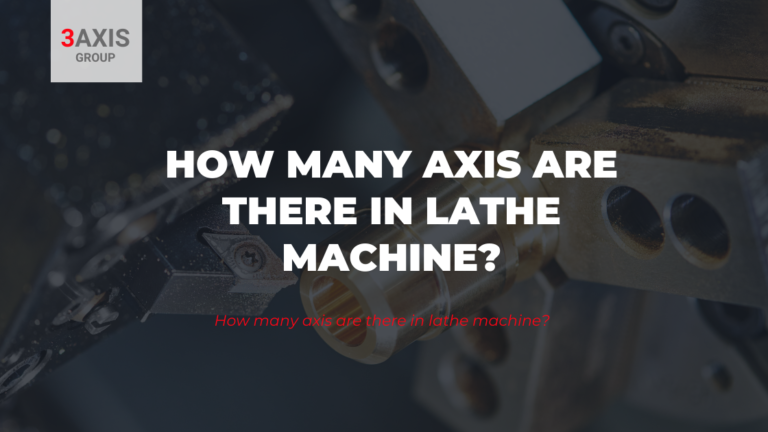The number of axes depends mainly on the type of machine. In addition, the amount of axes reveals a lot of information about the machine, for example, it reflects the variety of jobs it can perform and the detail with which it can cut a workpiece. If we speak in general terms, a CNC machine has a minimum of 2 axes which operates along the X, Z plane. X axis denotes the vertical plane and Z axis represents depth. But 3-axis CNC lathes are more versatile. Find out below how many axis there are in lathe machine.
The next step is to know what movements are performed on these axes. Focusing on milling machines, we can identify 3 movements. A cutting movement, which occurs between the surface of the tool rotating for example around the Z axis with respect to the surface of the workpiece, moving in the X or Y axis.
A forward movement, which you can observe when moving the workpiece along axes. Depth of cut, which you can observe when moving the tool along the Z axis to remove a layer of material from the surface of the workpiece.
How many axis does a CNC lathe have?
The number of axes you need in your CNC machine usually depends on the type of task you want to do, as we said before. And surely the details of the process are complex and that is why you need a CNC machine equipped with various axes. So, if you wonder how many axes I need or how many axis does a CNC lathe have, we explain below.
3-Axis
3-axis machining refers to the fact that the work piece stays in the same position while the cutting tool works along the XYZ plane. In this manner, the cutting tool trims the material. This sort of axes arrangement is ideal in those situations where you don’t want a lot of detailing and depth. It is important here to note that 3-axis machining is most used for drilling holes, slots milling and cutting along the sharp edges.
4-Axis
4-axis machining usually refers to the fact that a work piece would be processed in the same manner as it would be with a 3-axis machine. However, it comprises an additional rotary movement along the X-axis which is also known by the A-axis. With the help of this rotation, the workpiece can be cut around the B-axis.
This method is also quite important when you want holes and incisions on both sides of the material you are working on. From the discussion, you can guess that this type of machining is quite functional. As it can remove material from both the sides.
5-Axis
As evident from the name itself, a 5-axis CNC machine can be automatically manipulated from five axis at a single time. In addition to movements along the X, Y and Z axes, this type of machine can also choose two of the three rotational axes. The three rotational axes are also denoted by A-axis, B-axis, and C-axis. These three additional axes together can perform a 180-degree rotation around the X, Y and Z axes.
It is important here to note that this type of machining is normally used for engraving and milling specialized surfaces where expertise is of great importance. To sum up, the number of axes a CNC machine has usually depicts its capabilities.
It is also vital here to note that one needs to be fluent in CAM and CAD technology to program the CNC machines to perform a wide variety of tasks. The number of axes usually determines the type of movement a CNC machine can perform.
Discover all the CNC lathes options we have on our website, 3, 4 or 5 axes, you choose!
You may also be interested in this content:




